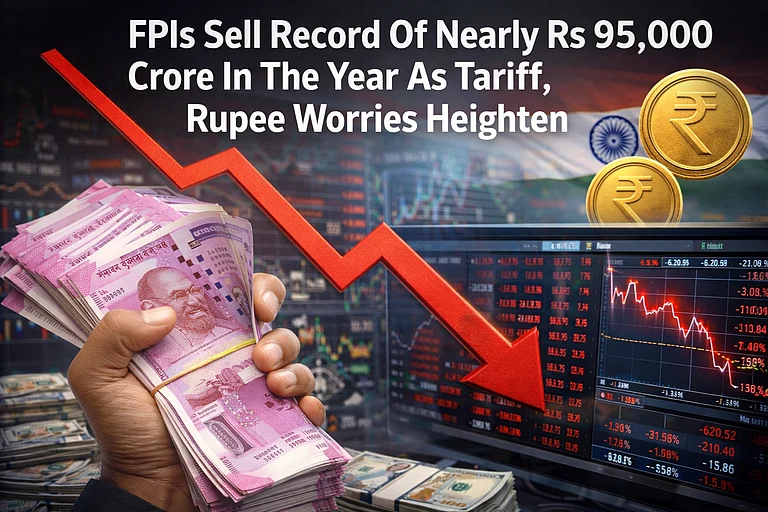Even as the devastating second wave of Covid-19 has crippled economic activity, the rupee value has been showing “complete nonchalance”. And with the prospects of higher domestic inflation, it is not doing any harm for RBI to let the rupee appreciate as it is reducing imported inflation when metal prices are rising, and clearing the liquidity overhang to some extent, says a report by SBI Research's Ecowrap. However, it added that this can be sustained only through vaccination and specific administrative reforms by the Centre and states in enabling a better medical infrastructure to prevent any further waves.
Rupee gained 154 paise between April 12 and May 7. The SBI report said this is perhaps the result of exchange rate anchored inflation-targeting that the RBI has assiduously shifted to recently. “This is also evident from the recent changes in the RBI Quarterly Projection Model (QPM) model that has been calibrated to include the balance of payments and exchange rate interactions as well,” it said.
So what has changed? In the merchant market (in both spot and forward segment) there was an excess supply of $86 billion during April 2020 to February 2021 period. However in the interbank market, there has been excess demand of $72 billion, it said.
“The good thing is that given the prospects of higher domestic inflation, as supply disruptions mount, it is not doing any harm for RBI to lean with the wind and let rupee appreciate as it is reducing imported inflation when metal prices are rising, and clearing the liquidity overhang to some extent. The large supply of dollars will ensure that rupee will appreciate from the current levels and this could potentially play to the advantage of RBI in inflation management,” it explained.
The SBI report pointed out, however, that there was more to this exchange rate management. “To neutralise any additional liquidity, the RBI is also intervening in the forward markets through swaps. RBI is doing what is called a sell/buy swap where the RBI is selling the dollars now to buy it back at a future date and paying a premium. Intervention in the forward market is an important aspect of maintaining financial stability, although the move has been gradual,” it said.
The bank said that the challenges posed by the pandemic are being exacerbated by the confounding market behaviour. There could always be a possibility that the growth outlook of the US, UK, and even European Union remains strong as the regions have recovered from multiple Covid-19 waves through aggressive vaccination. India is currently only in the initial phase of vaccination and in the midst of a catastrophic second wave. In that case, if capital flows reverse, the exchange rate could start depreciating and inflationary pressures will mount further, thus complicating the task of MPC to balance the trade-off between growth and inflation, it added. Additionally, the other issue is that with significant open positions in USDINR carry trade, a vibrant non-deliverable forward market with big players, and a high forward premia, if due to any event, the positions are unwound, it can put significant depreciating pressure on the rupee.
“The RBI has played an amazing role through the pandemic and we only hope that fortune favours the brave! Bur for that, vaccination and specific administrative reforms by Centre and states in the interregnum in enabling a better medical infrastructure to prevent any further wave hold the ace,” it said.













